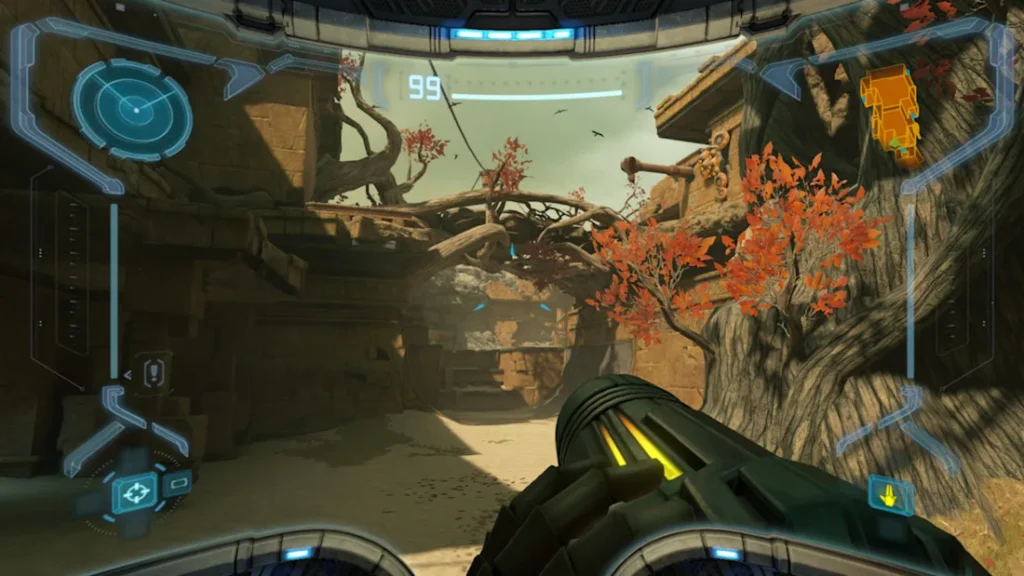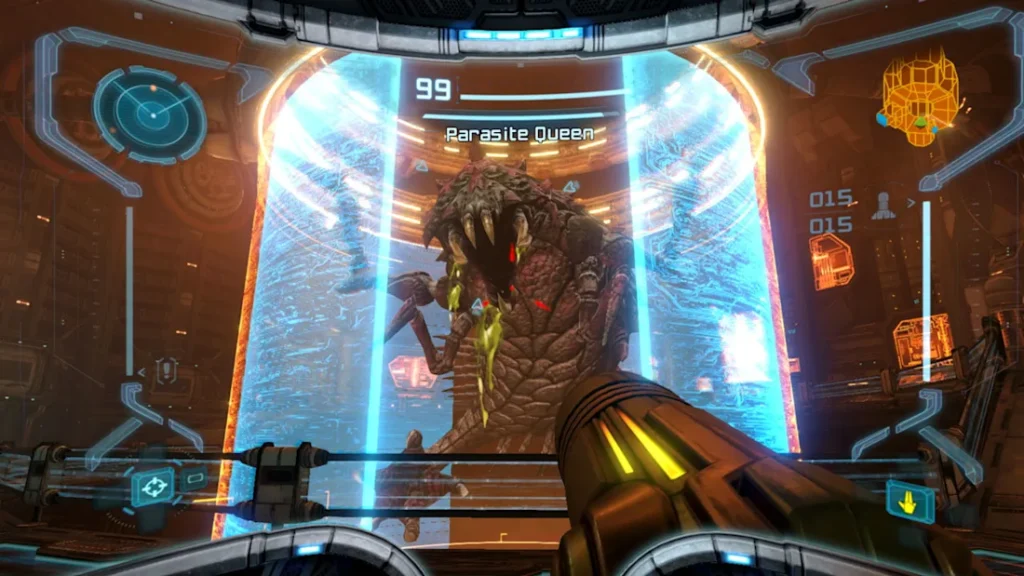Culture
Metroid Prime: Remastered, We’ve Hit Peak Remaster
Metroid Prime stands the test of time as one of Nintendo’s best experiences.

The original Metroid Prime is many things to me: my first video game, a staple of my childhood, and a title that I go back to time and time again. Most of all, though, it’s just a really good game. I’ve waxed poetic about it before, but the original Metroid Prime is a testament to developer Retro Studios’ ability to deliver an experience that brought about one of the more seamless transitions to 3D for any franchise.
Too Many Platforms, Not Enough Exposure
With all that in mind, it’s been a shame that Prime remained stuck on older hardware. While it’s been released three times—twice physically and once digitally—the platforms it has inhabited have been either unpopular *cough* GameCube and Wii U *cough* or the game itself was too expensive for most buyers *cough* Metroid Prime Trilogy on Wii. Finding a copy to play that worked well on modern TVs without a special GameCube, Wii component cables or one of the six Wii Us ever sold was somewhat difficult.
Arguably, the best way to play it has been to use a fork of the Dolphin Emulator known as PrimeHack with a legally obtained copy of Metroid Prime Trilogy for Wii. This version of Dolphin allowed for twin-stick movement and even a keyboard and mouse, but it was hardly perfect. Even on a relatively mid-spec gaming PC, shader compilation stutter wasn’t completely absent.

Enter Metroid Prime Remastered. In an age where remasters routinely do the bare minimum, usually boosting FPS, or upping graphics just a bit, it is extremely surprising to see a game remade with such attention to detail and such a revamped approach.
I’ve discussed Metroid Prime’s game design in detail before, so I’ll leave my basic verdict on the underlying game intact. While it’s a bit heavy on backtracking and feels fundamentally early 00s in a lot of its game design—hello, save stations!—it’s still an absolute classic. Amazing music, fantastic atmosphere, and an intuitive and interesting scanning system make it an innovative and important part of the series’ history.
What, then, does the remaster do to enhance it, to improve it beyond what the original game had in place?
A True Remaster
For starters, the revamped graphics are spectacular. Though it’s a remaster of a game from 2002, in contrast to many games on Switch, this wouldn’t look out of place on Series S. It is easily one of the best-looking Switch games ever made. Reports put the resolution in docked mode at 900p and in handheld at 600p. If I’m being honest, I could not tell that this was running at less than native resolution on my 1080p panel or in the Switch’s handheld mode. Whatever black magic was done in the rendering pipeline to make a 900p image look this crisp on my cheap Insignia TV, it worked fantastically.

Like many people, I didn’t think there was that big of a difference between this and the original Metroid Prime, which I just replayed a few years ago (on original hardware with a CRT like a big nerd). But, after watching some comparisons, it’s clear that this is a massive step up from the original.
The increased contrast between light and dark areas is one of the greatest feats of the upgraded lighting engine. While the original game’s shading was amazing for its time, the new lighting engine really plays up the differences making the entire world seem even more immersive than ever before.
Textures too, see a huge bump up from the GameCube and Wii versions. While there are still some rough-looking textures around the edges if you squint hard enough, most objects now have more detailed textures that jump out in comparison with the GameCube original. Enemies, especially, see a huge difference, with the various segments and limbs of foes looking more organic and less cartoony than before. The Parasite Queen, above, stands out as an enormous step up from GameCube and Wii. Many of the subsequent bosses are the same, with greater detail that really emphasizes Prime’s amazing art direction.
Control Options? Well…
What about controls? Well, twin-stick is finally here, and it’s great to finally experience Prime with proper dual-analog controls–for the most part, at least. Holding down the X button to change beams is a bit clunky, and Samus feels a bit floaty, but overall, it is hands down the definitive way to control Samus in any iteration of the game that has been released by Nintendo.
However, the other control options aren’t that great. Returning to the original GameCube control scheme feels clunky, alongside the “hybrid” control scheme, which tries to mesh the original control scheme with motion controls. Both fall flat and are best avoided unless you love the original GameCube control scheme.

How about gyro aiming? Prime Trilogy’s aim felt so great and intuitive that it was almost as good as a mouse and keyboard. Did it lose anything in the transition to gyro aiming?
Sadly, yes. Gyro aiming, like in most incarnations, just isn’t very good. Unlike the pinpoint precision of IR or a mouse, it feels floaty and imprecise. If you like the motion controls of the Prime Trilogy release, then you may want to adjust your expectations likewise. Trilogy still has superior motion aiming.
Conclusions: Well Worth the Price
How about the price? Well, with the GameCube original going for its retail MSRP, the Trilogy copy on Wii going for twice what it cost on release, and the Wii U eShop soon to shutter on new game purchases, $40 looks like a great price to pay for a redone, upgraded version of this classic game.
Clearly, a lot of people won’t be willing to pay that price for a remaster of a game that turned 20 last year. I get that; there are always new games to play, and, suffice it to say, many people have already enjoyed the first entry in this classic game series, whether on the original consoles or through various—uh—other means.
Nevertheless, unlike other recent rereleases, think The Legend of Zelda: Skyward Sword HD or Super Mario 3D All-Stars, Metroid Prime Remastered feels less like an FPS boost and resolution boost than a loving update of a classic, fantastic game that deserves its place on modern hardware. In other words, it’s peak remaster.

-

 Features4 weeks ago
Features4 weeks agoGet Ready: A Top Isekai Anime from the 2020s Is Headed to Hulu!
-

 Features4 weeks ago
Features4 weeks agoSocial Gaming Venues and the Gamification of Leisure – A New Era of Play
-

 Features4 weeks ago
Features4 weeks agoSolo Leveling Snubbed?! You Won’t Believe Who Won First at the 2025 Crunchyroll Anime Awards!
-

 Culture4 weeks ago
Culture4 weeks agoThe Global Language of Football: Building Community Beyond Borders
-

 Technology2 weeks ago
Technology2 weeks agoGamification and Productivity: What Games Can Teach SaaS Tools
-

 Features2 weeks ago
Features2 weeks agoThis Upcoming Romance Anime Might Just Break the Internet; Trailer Just Dropped!
-

 Features3 weeks ago
Features3 weeks agoFarewell to a Beloved 13-Year-Old Isekai Anime That Brought Us Endless Laughter
-

 Features6 days ago
Features6 days agoDon’t Watch These 5 Fantasy Anime… Unless You Want to Be Obsessed
-

 Features3 weeks ago
Features3 weeks agoWait, What?! Tom & Jerry Just Turned Into an Anime and It’s Glorious!
-

 Culture3 weeks ago
Culture3 weeks agoIs the Gaming Industry Killing Gaming Parties?
-

 Game Reviews3 weeks ago
Game Reviews3 weeks agoCall of Duty and the Myth of Military Realism: Tactical or Just Tacticool?
-

 Technology3 weeks ago
Technology3 weeks agoDigital Cash: For Gamers Who Don’t Ask Permission?





